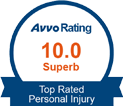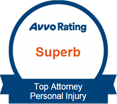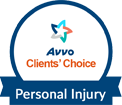Different car manufacturers are testing self-driving cars, with thousands of these cars already on the road. While this might appear a good move towards reducing accidents caused by drivers’ errors, driverless vehicles can still be involved in accidents. When this happens, determining liability becomes a complex issue.
Victims of a driverless car accident could file an injury lawsuit against the self-driving car manufacturer if the car caused the accident. The victim may be liable for compensation under product liability laws for the damages suffered. A driver may also be liable if they were using autopilot at the time of the accident.
If you have sustained injuries following a self-driving car accident, working with the right attorney is essential. At The Personal Injury Attorney Law Firm, we understand how complex these car accident cases are, and we will do our best to help you get fair compensation after the accident.
Determining Liability
Fault in an auto car accident depends on various factors. For instance, did the accident occur because one car violated the traffic laws, or were there multiple cars doing the same? Some of the things that significantly contribute to a driverless vehicle or partially autonomous car accidents include:
- The manufacturers that designed or produced the auto vehicle
- The driver of a regular car that is not autonomous
- The person operating the wheel of a partially driverless vehicle
There can also be multiple parties liable for causing a single accident. If more than one party is at fault for causing the accident, the jury can determine the liability percentage for each party.
If you suffered an injury and are partially at fault for causing the accident, you are still liable for partial compensation under California comparative fault laws.
Negligence is the leading cause of most car accidents. Every driver is obligated to exercise a duty of care while driving. They should keep an outlook for any obstacles on the road, pedestrians, and other vehicles.
If an accident occurred because the motorist failed to use reasonable care /negligence while filing a personal injury lawsuit, the plaintiff must prove that:
- The accused owed the victim a duty of care
- The accused violated the duty of care by negligence
- The accused’s negligence was the leading cause of the injury or death
If the jury determines that the defendant was negligent, they may be liable for any injuries or damages sustained by the plaintiff.
Major Causes of Self-driving Car Accidents
Self-driving car accidents can be caused by many issues. Below are some of the major causes of these accidents.
The Manufacturers that Designed or Produced the Auto Vehicle are Liable for the Accident
Failure in autonomous driving systems is one of the causes of driverless car accidents. Failure to let the operator be in control, System failure, and software bugs are some of the self-driving vehicle defects that could lead to an accident.
Autonomous car systems use powerful computers, sensors, cameras, and radar to operate the vehicle’s steering, braking, and controlling speed. There are a few companies that have self-driving vehicles on the road, including:
- General Motors
- Google (Waymo)
- Uber
- Tesla
In California, any person who sells, manufactures, or designs a defective product, is liable for damages caused by the product under California’s products liability laws. Meaning that the plaintiff does not have to prove the company’s negligence; they only need to show that the product was faulty and the primary cause of the accident.
The different types of defects in a self-driving car include:
- Design defects
- Manufacturing defects
- Failure to warn defects
If the jury determines that a manufacturing defect or design was the cause of a driverless car accident, the manufacturing company of the self-driving vehicle may be held liable for any injuries sustained and damages.
The Driver of a Regular Vehicle that is not Autonomous
Sometimes, a driver of a non-autonomous vehicle may also cause an accident. If a driver does not use reasonable care while driving and ends up causing an accident, they may be liable for any injuries or damages resulting from the accident, even if the other car involved was a driverless car or a partially autonomous vehicle.
Every motorist should be on the lookout for other vehicles, obstacles, pedestrians, and even self-driving vehicles. If they fail to use reasonable care and get involved in an accident, there is enough negligence evidence. Other negligence acts that could lead to an accident include:
- Distracted driving
- Speeding
- Driving a vehicle with faulty brake lights
- Drunk driving
- Road rage
- Failure to yield
- Failure to stop at a traffic signal
A plaintiff has to prove that the defendant was negligent and their negligence caused the accident. If the jury determines that the defendant was indeed negligent, they could be liable for the damages caused by the accident.
The Person Operating the Wheel of a Partially Driverless Vehicle
Even though a vehicle is driverless, they still have a human in the driver’s seat. Self-driving cars operate on pilot programs that need to be operated by a human driver who can take swift control of the car if an emergency occurs. This operator is termed as the person on the driver’s seat, or if there is no one on the driver’s seat, makes the autonomous technology take part.
According to CA Vehicle Code 38750, autonomous vehicles must have an alert system to notify the operator of any failure detected in the autonomous technology. The system must also allow the operator to take full control of the self-driving vehicle as well as its:
- Steering wheel
- Accelerator
- Brakes
If the test driver fails to take control even after being notified of an emergency, they may be responsible for causing the accident. Even though the test driver responds to the emergency and takes control of the car but does something that leads to the accident, they may be at fault for causing the accident. When the autonomous car is not in self-driving mode or the test driver overrides, they operate the vehicle like any regular driver.
Recently, California has started taking in requests for fully driverless vehicles. Self-driving testing permits will allow autonomous vehicles to operate without a test driver or mirrors, brake pedals, gas, or steering wheels.
There are some autonomous cars like Tesla models that have an autopilot system. The autopilot is treated as a self-driving mode, but there must be a driver available to take care of the vehicle in case of an emergency. As per Tesla, each driver should stay alert and active while using Autopilot and be ready to take action in case of an accident.
At times, Lax government oversight can also cause an autonomous car accident. A government agency that allows self-driving cars to be tested on the road can also be held accountable if they expose the public and other road users to unreasonable risk or harm.
What Compensation Can I Receive After a Self-driving Car Accident
Victims of a driverless car accident are supposed to file a personal injury lawsuit or a claim for injuries sustained. They can file a claim for compensatory damages, including non-economic and economic compensation, which aim to put the victim in the same position they could be if they were not involved in an accident.
Some of the damages sustained in an autonomous car accident include:
- Pain and suffering
- Lost future earnings
- Vehicle damage
- Medical treatment
- Lost income
- Loss of life enjoyment
- Loss of consortium
- Loss of a limb
- Emotional distress
- Court costs
- Future medical treatment
- Physical therapy
At times, punitive damages, which are also referred to as exemplary damages, may also be present. These types of damages are present if the defendant was involved in bad behavior. You cannot file a claim for punitive damages with ordinary negligence as the evidence. You have to prove that the defendant’s actions were extremely reckless, intentional, oppressive, fraudulent, or malicious.
Definition of Clear and Convincing Evidence
To recover actual damages in California, the victim has to prove every claim per the preponderance of the evidence. Meaning the victim has to prove beyond reasonable doubt that every element of the claim is true.
However, in punitive damages, the victim must show fraud, oppression, or malice by clear and convincing evidence beyond a reasonable doubt. Although this term is not defined under California law, it is a higher burden of proof than any ordinary evidence.
What is the Process for Seeking Punitive Damages?
Apart from the economic and non-economic compensatory damages, you can also seek punitive damages. The victim is supposed to request for an award of exemplary damages specifically. Note that this request does not specify the amount of money required as compensation. At times, exemplary damages are sought in the same proceeding with the defendant’s liabilities. However, the defendant has the right to request the issue to be fractionated and be tried differently.
If the issue is fractionated, the defendant’s financial situation will not be discussed not unless:
- The victim wins the case first
- The court finds out that the defendant is indeed guilty of fraud, oppression, or malice
Only then will the court listen and discuss the defendant's financial status and decide the amount they should pay for the punitive damages.
The Process of Calculating Punitive Damages in California
There is no fixed standard way of calculating exemplary damages in a California personal injury case. However, there are certain things that a jury looks at before determining whether to award a plaintiff these damages and the amount they need to be paid. The jury will look at:
- The amount of blameworthy in the defendant’s conduct
- If there is a relative relationship between the exemplary damages and the victim’s harm
- The punishable amount that will discourage the defendant from committing similar offenses in future
Who else Can File a Lawsuit in a Self-driving Car Accident?
There are situations where other parties can file a car accident lawsuit other than the victim. If a person dies in a driverless car accident, they cannot hold the liable party responsible. However, their family members can file a lawsuit for wrongful death to ensure that the party at fault is held accountable for their actions.
Not every family member is allowed to file a claim for wrongful death in California. The only relatives allowed to file these claims include:
- Children
- Domestic partners
- Spouses
- Grandchildren (if the children are not alive)
- Any person entitled to the deceased’s property under California intestate succession laws
A wrongful death lawsuit may include damages like:
- Funeral costs
- Loss of affection
- Burial costs
- Loss of support
- Companionship loss, and
- Loss of financial support that the deceased would have provided
How Do I Prove Fault in a Self-driving Car Accident?
Like in normal car accidents, every party involved has a different story on what caused the accident. It might be a little complex in autonomous car accidents because it may be uncertain if the self-driving vehicle had software or system failure that caused the accident.
Disputed vehicle crash claims may require lawyers and insurance companies to carry out an investigation. In driverless car accident claims, experts may be required to review the accident data and evidence to determine the primary cause of the accident.
If you have been involved in a similar accident, you may need help from your personal injury attorney and expert engineers to investigate and review the accident. The specialists can issue a specialized opinion on what caused the accident and testify their belief in court during a hearing.
How is Insurance Handled in a Driverless Car Accident?
As stated above, In California, the product's manufacturer is responsible for any harm or damage caused by the product. Today, all vehicles on the road (including self-driving cars) operate with human intervention. In short, even autonomous vehicles still need a human driver to control and operate the vehicle at some point. So if the vehicle is involved in an accident, the manufacturer or the operator could be responsible for the time being.
There will be high levels of autonomy with time, meaning the vehicles may require no backup driver to control or operate them. When that time comes, the manufacturer may be held fully accountable for what the vehicle does. Until then, the responsibility will be shared.
Levels of Automation
The level of the vehicle’s automation during the accident helps determine liability in a self-driving car accident. If the vehicle had a lower level of automation, the driver would more likely be held responsible.
There are six levels of vehicle automation developed by the Society of Automotive Engineers and the NHTSA (National Highway Traffic Safety Administration). They include:
- Level 0 — Includes only basic features like cruise control. Meaning there is no automation, and the driver does everything.
- Level 1 — Most cars offer level 1 automation like lane keep assist and adaptive cruise control with cameras and radars. In other words, it offers some vehicle assistants like steering and power brakes.
- Level 2 — Helps the vehicle control steering and speed, but the driver must remain in control. This level helps the vehicle to stay centered in the lane and helps drivers in slow-moving traffic. This automation level offers partial automation like cruise, and it is available in Volvo’s Pilot Assist, Audi’s Traffic Jam Assist, and Tesla’s Autopilot feature.
- Level 3 — (Conditional Automation) Cars on this level can drive themselves without a driver in control under predetermined conditions. However, drivers must remain ready and alert to take control at any moment.
- Level 4 — Vehicles do not need human interaction; they can drive themselves but are limited to known uses and can drive in almost any road condition and most environments. In other words, this is high automation, and the driver is only required to key in route information. However, they still have the option to take control of the vehicle.
- Level 5 — At this level, the vehicle is entirely driverless. Cars at this level can drive in any road condition without any physical driver. These are fully automated vehicles and will likely not have a gas pedal and steering wheel. These cars may only be available for years to come.
Like other car accidents, autonomous vehicles can also cause a fatal accident resulting in severe injuries or death. Self-driving vehicles have not been on the road for a long period, and there are only limited driverless cars on the road. There have also been a significant number of driverless car accidents and fatalities.
Find a Car Accident Attorney Near Me
Various technology companies are collaborating with automakers to develop and test driverless cars. They aim to reduce vehicle accidents since human error is among the most common causes of road accidents. The idea of eliminating human error from the road is intelligible but, when driverless vehicles get into a collision, the legal responsibility of the crash becomes complicated.
Our attorneys at The Personal Injury Attorney Law Firm are dedicated to helping accident victims seek compensation. We can help you determine liability, even in complex accidents involving California self-driving car accidents. Get in touch with us today at 619-625-8707.
 800-492-6718
800-492-6718







